Are you aware that there are indicators of evolution discoverable on your own body? Evolution is not an infallible process; biology usually takes millions of years to modify and adapt. Alongside these modifications, leftover pieces of our evolutionary past remain. These pieces, known as vestigial structures, often take the form of bones, organs, or muscles that have lost their original purpose in the body’s functioning. These structures offer a distinctive glimpse to scientists and researchers into the history of human evolution. Want to determine what proof is easily observable on your body? Check out these 25 Indicators Of Evolution You Can Discern On Your Body.

Philtrum
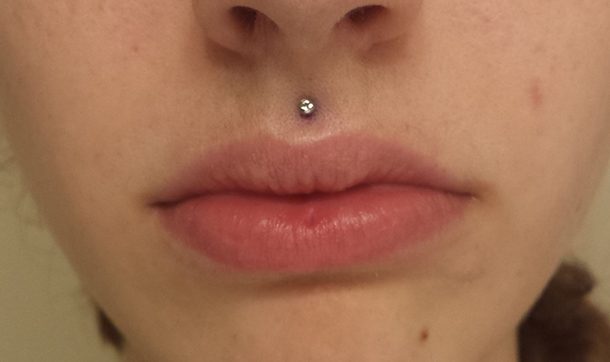 Source: http://www.bbc.com/news/health-13278255
Source: http://www.bbc.com/news/health-13278255 The Philtrum is the groove between your nose and mouth. It develops during the two to three months of embryo gestation in the womb. Because it has no real function, some evolutionists believe it’s a trait that was passed down from fish.
Hiccups
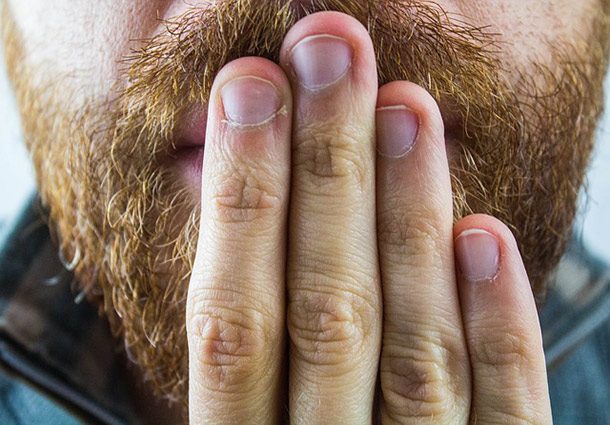 Source: https://www.livescience.com/33688-hiccup-purpose.html
Source: https://www.livescience.com/33688-hiccup-purpose.html We’ve all had hiccups. They’re those annoying spasms in your chest you’ve tried every trick in the book to get rid of. You know, like having someone scare you. Scientists call this reaction “singultus,” and it has no known purpose. They believe it is a trait passed down from our amphibian ancestors. They’ve found that the electrical trigger in the brain for both amphibians and humans is the same when a hiccup occurs.
Plantaris Muscle
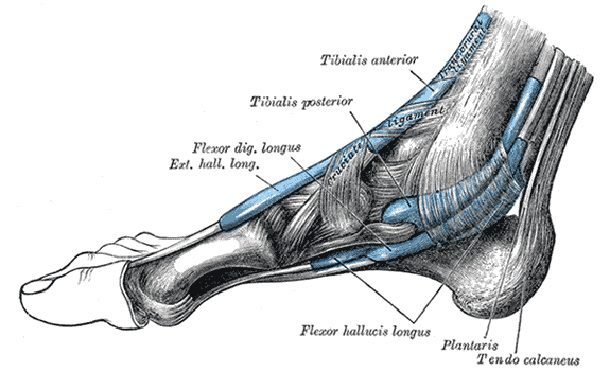 Source: http://www.dailymail.co.uk/sciencetech/article-3502679/The-evolutionary-leftovers-bodies-Video-reveals-tailbone-forearms-ears-tell-ancestors.html
Source: http://www.dailymail.co.uk/sciencetech/article-3502679/The-evolutionary-leftovers-bodies-Video-reveals-tailbone-forearms-ears-tell-ancestors.html The Plantaris muscle is in the foot. Many primates use this muscle to grip objects with their feet. Humans also have this muscle, but it’s lost its function and purpose. Because of this, doctors will use this muscle when doing reconstructive surgery since it has no use in the foot.
Darwin-Tubercle
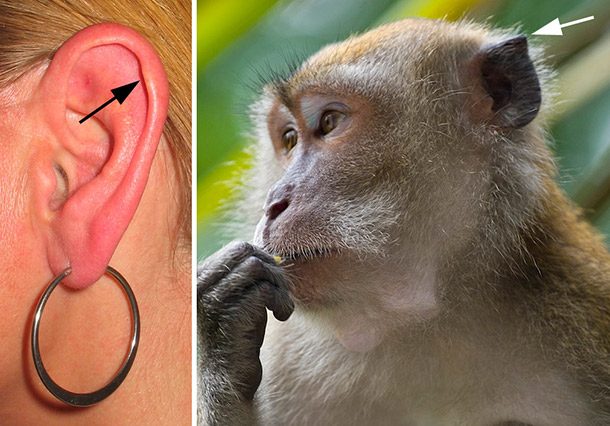 Source: https://www.ncbi.nlm.nih.gov/pmc/articles/PMC4906103/
Source: https://www.ncbi.nlm.nih.gov/pmc/articles/PMC4906103/ The Darwin-Tubercle is a bump on the upper part of the human ear. Not all humans have this feature. Scientists believe this trait was passed down from other primate ancestors that have more pointed ears.
Palmar Grasp Reflex
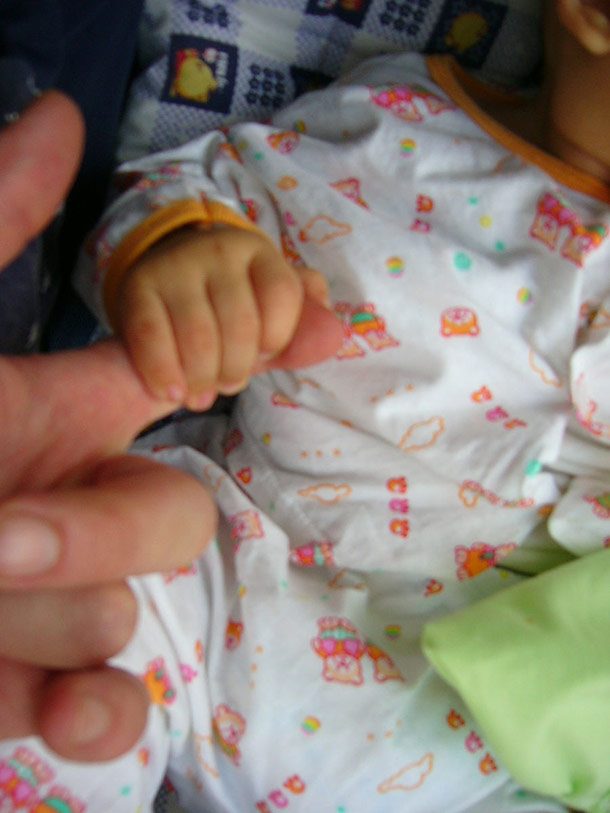 Source: http://originsofmotherhood.com/reflexes.php
Source: http://originsofmotherhood.com/reflexes.php Ever wonder why newborn babies will grip your finger really tight? It’s called the Palmar Grasp Reflex. In most cases, the baby’s grip is so strong, it can support their body weight. Scientists believe this reflex came from our hairier ancestors. Infants of other primate species will grip on to their mother’s hair to go from one place to another.
Auricularis Ear Muscles
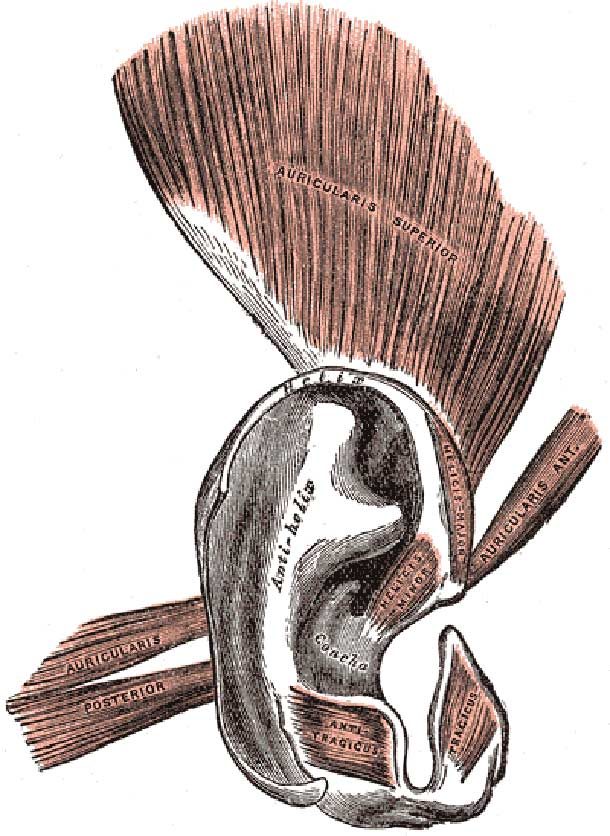 Source: https://www.livescience.com/52544-vestigial-ear-muscles-try-to-wiggle.html
Source: https://www.livescience.com/52544-vestigial-ear-muscles-try-to-wiggle.html Around your ears are the Auricularis Ear Muscles that are mostly too weak to use. While the reflex still exists for some, most people can’t utilize their original purpose, which was to move ears back and forth.
The Phrenic Nerve
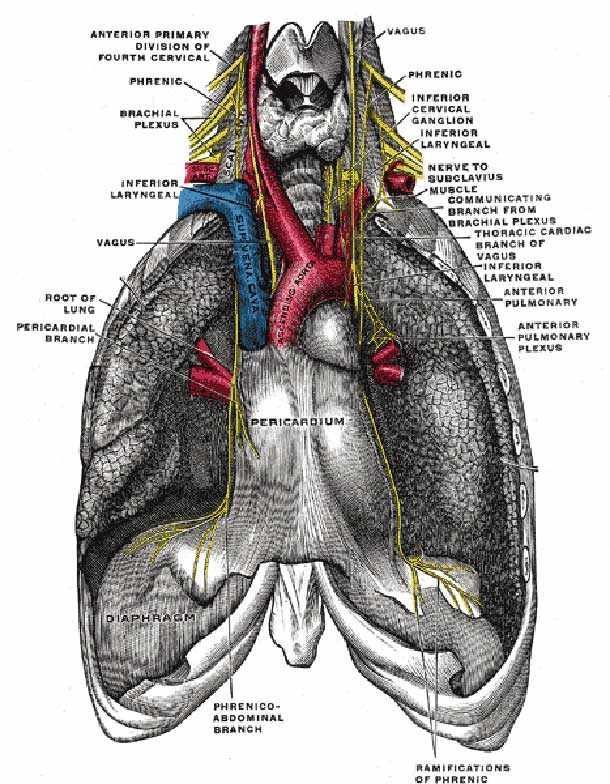 Source: http://www.naturalhistorymag.com/features/04971/fish-out-of-water?page=2
Source: http://www.naturalhistorymag.com/features/04971/fish-out-of-water?page=2 The Phrenic Nerve controls the contraction of the diaphragm. Similar to fish, it comes out of the brain stem from the base of the skull and goes all the way down the neck and chest cavity to the diaphragm, leaving it exposed and vulnerable. While this works well for fish, it’s a poor setup for mammals, including humans. Subsequently, scientists believe this is a leftover evolutionary trait from fish.
Pinky Toe
 Source: http://www.sciencebuzz.org/blog/long-and-short-human-toes
Source: http://www.sciencebuzz.org/blog/long-and-short-human-toes Scientists believe a human’s five toes developed from our ancestor’s requirement of long-distance running to hunt down and kill their prey. However, today, while some of our toes are important for balance, our pinky toes are mostly useless. It’s thought there’s a high probability that humans will eventually evolve out of having a pinky toe altogether.
Palmaris Longus Muscle
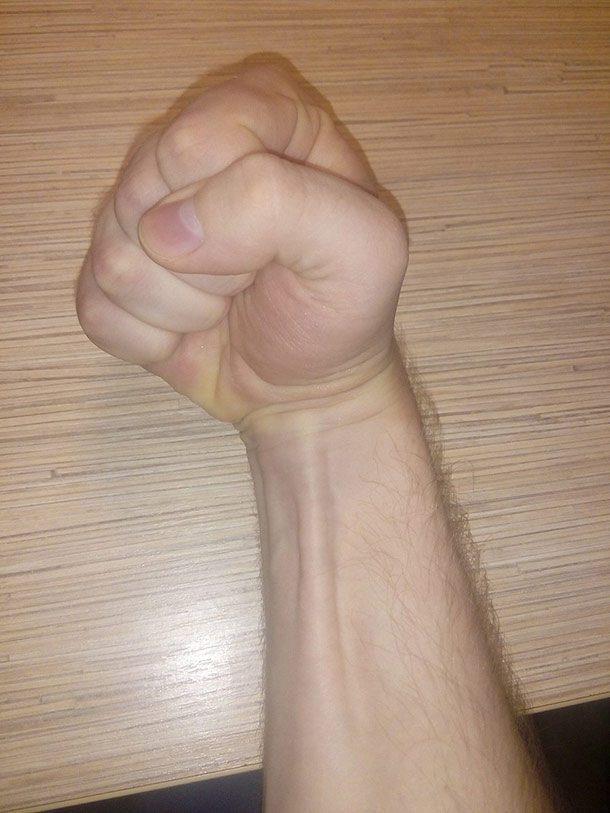 Source: https://www.ncbi.nlm.nih.gov/pmc/articles/PMC3652998/
Source: https://www.ncbi.nlm.nih.gov/pmc/articles/PMC3652998/ Not everyone has a Palmaris Longus Muscle. You can determine if you have one by pinching your thumb and pinky together and flex your wrist up a little. A long muscle will protrude if you have it. While this muscle played a part in gripping and climbing for our primate ancestors, it’s primarily useless for us and doesn’t affect our gripping strength.
Lack of Hair
 Source: https://www.scientificamerican.com/article/latest-theory-human-body-hair/
Source: https://www.scientificamerican.com/article/latest-theory-human-body-hair/ Humans are the only primate that lacks a coat of hair on their body. Even among mammals, this is a rarity. Scientists have theorized that our lack of hair evolved over 6 million years ago when we started to hunt in the water, moved out into the hot savannah, and could also have been a defense mechanism to reduce parasites, like ticks.
Goosebumps
 Source: http://humanorigins.si.edu/education/fun-facts/why-do-we-get-goose-bumps
Source: http://humanorigins.si.edu/education/fun-facts/why-do-we-get-goose-bumps When animals with a coat of fur get cold, their muscles contract and their hair follicles stand up on end, creating a thicker layer of protection. This reflex has been left over in humans, and it’s what we call goosebumps.
Wisdom Teeth
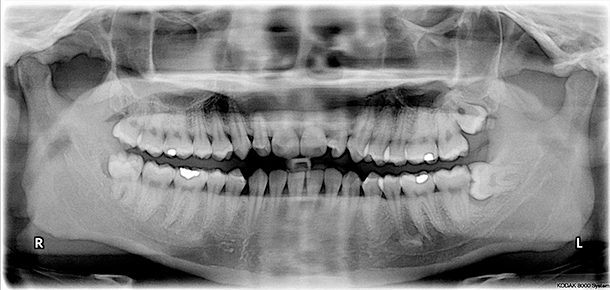 Source: https://science.howstuffworks.com/life/evolution/no-wisdom-teeth1.htm
Source: https://science.howstuffworks.com/life/evolution/no-wisdom-teeth1.htm Long ago, our ancestors were able to have all 32 teeth, and it was a huge advantage for their diet. But, as humans evolved, used fire and tools to cook their food, their diet changed and so did their evolution. Over time, their jaws grew smaller but their back molars, called Wisdom Teeth, remained. Some people today don’t even have wisdom teeth. Those that do usually have them removed.
Coccyx Tailbone
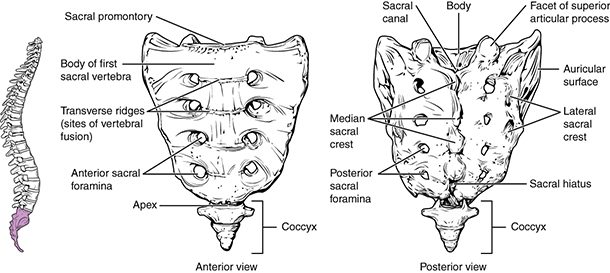 Source: http://scienceline.ucsb.edu/getkey.php?key=4555
Source: http://scienceline.ucsb.edu/getkey.php?key=4555 The Coccyx or Tailbone is another vestigial feature in humans. It’s a leftover feature where a tail would have grown. In some cases, people do grow tails, but it’s now considered a congenital defect. Scientists theorize humans stopped growing tails when they starting walking on only 2 feet.
Plica Semilunaris
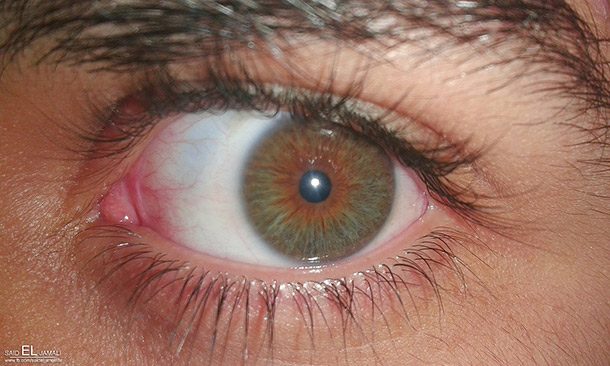 Source: https://www.ncbi.nlm.nih.gov/pubmed/15255295
Source: https://www.ncbi.nlm.nih.gov/pubmed/15255295 The Plica Semilunaris is in the corner of your eye. It’s a leftover part of a nictitating membrane seen in other mammals and vertebrates that acts as a third eyelid. Over time, humans have lost the use of this feature, but the Plica Semilunaris is the evidence we once had it.
Male Uterus
 Source: http://discovermagazine.com/2004/jun/useless-body-parts
Source: http://discovermagazine.com/2004/jun/useless-body-parts Also called the prostatic utricle, the male uterus is an undeveloped remnant of the female reproductive organ that hangs off the male prostate.
L-gulonolactone Oxidase
 Source: https://www.sciencedaily.com/releases/2008/03/080320120726.htm
Source: https://www.sciencedaily.com/releases/2008/03/080320120726.htm Somewhere along the evolutionary road, humans lost the ability to produce their own vitamin C. Almost 4,000 other mammals have this ability. Through DNA testing, we’ve discovered one of the genetic structures that once helped us create vitamin C was L-gulonolactone Oxidase, but it’s now a disabled gene.
Male Nipples
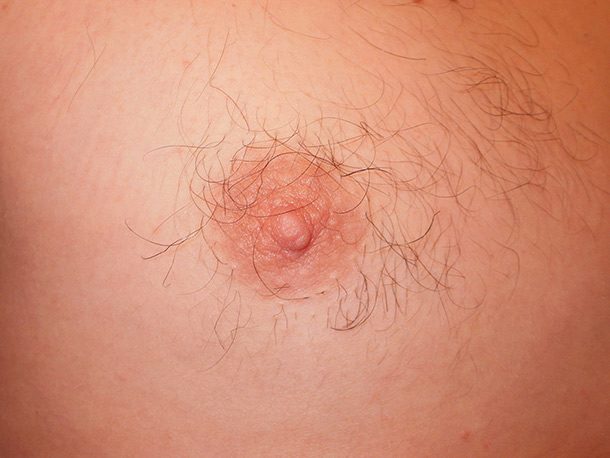 Source: https://www.sciencealert.com/why-do-men-have-nipples
Source: https://www.sciencealert.com/why-do-men-have-nipples While we know why women have nipples, understanding why men have nipples has perplexed people for centuries. The answer lies in how mammal embryos gestate and switch from female to male. Breast tissue is developed long before the switch to male occurs, but once it does switch, men keep the nipples.
Tonsils
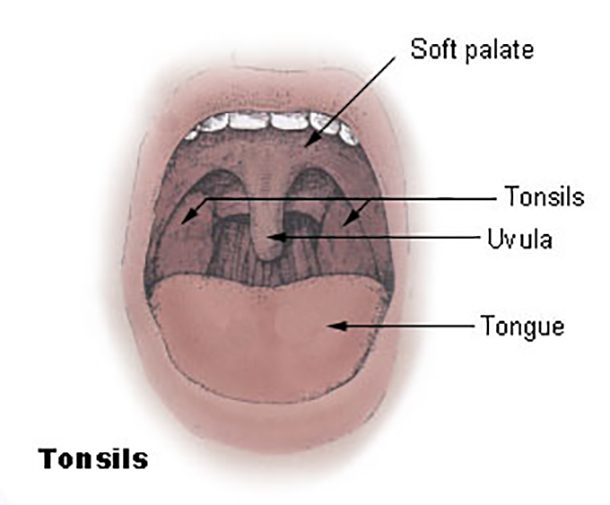 Source: http://www.foxnews.com/health/2014/05/25/7-useless-body-parts-explained.html
Source: http://www.foxnews.com/health/2014/05/25/7-useless-body-parts-explained.html Tonsils are part of your lymphatic system and can help ward off disease. Their function, however, is more redundant than useless. If a child gets tonsilitis, they can have them removed without it affecting their immune system.
Thirteenth Rib
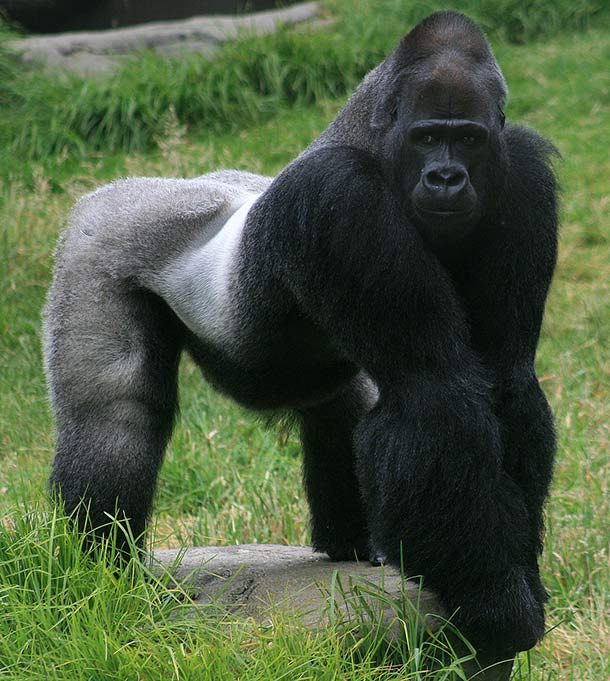 Source: http://discovermagazine.com/2004/jun/useless-body-parts
Source: http://discovermagazine.com/2004/jun/useless-body-parts Most humans have twelve ribs, while our distant relatives, the gorillas, and chimpanzees, have an extra thirteenth rib. Turns out, eight percent of the human population has the extra rib as well.
Armpit Hair
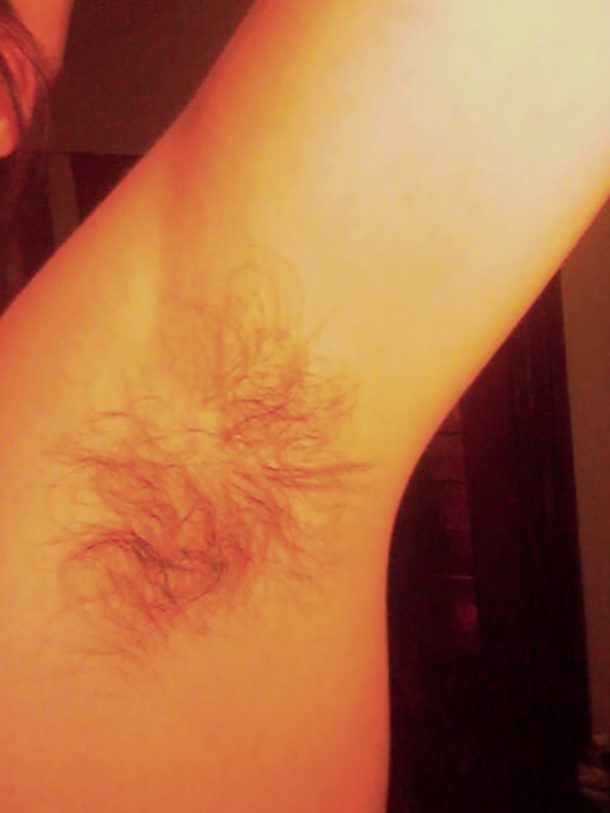 Source: http://www.foxnews.com/health/2014/05/25/7-useless-body-parts-explained.html
Source: http://www.foxnews.com/health/2014/05/25/7-useless-body-parts-explained.html Scientists theorize armpit hair played a former role in correlation with your apocrine sweat glands. The hair would have held on to the odor long enough for a potential mate to smell it and be attracted.
Appendix
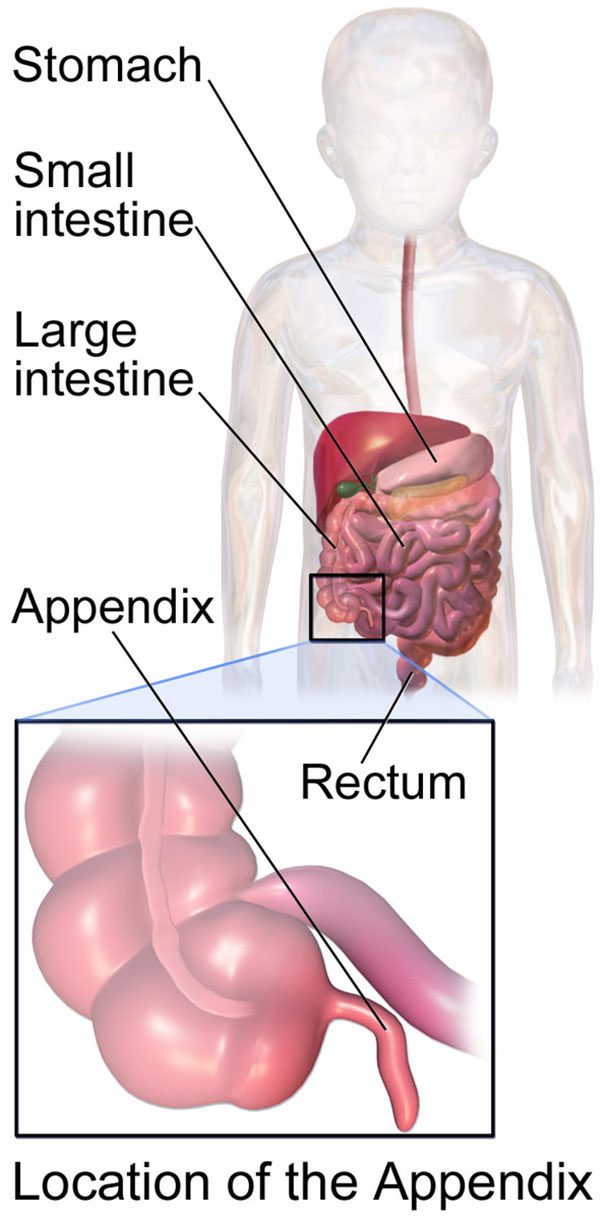 Source: https://www.sciencedaily.com/releases/2009/08/090820175901.htm
Source: https://www.sciencedaily.com/releases/2009/08/090820175901.htm The Appendix is a commonly known vestigial organ that hangs off the large colon. It was once used by our ancestors to digest food. While it has been largely considered useless by scientists, recent studies have shown it provides a safe haven for bacteria to stay before repopulating the gut.
Neck Ribs
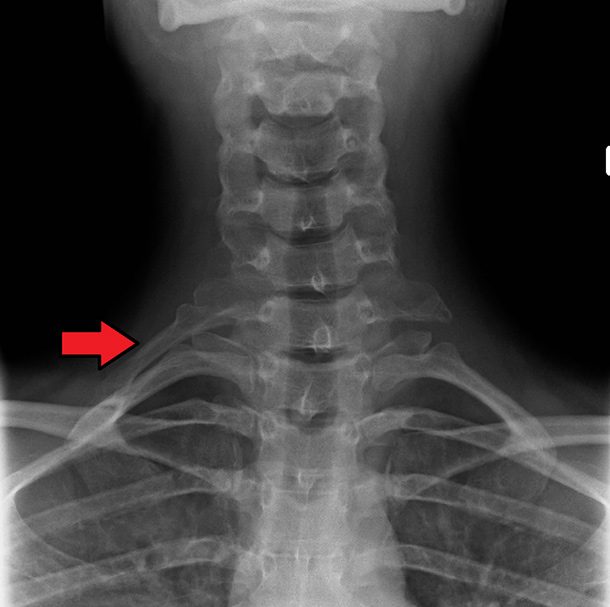 Source: http://discovermagazine.com/2004/jun/useless-body-parts
Source: http://discovermagazine.com/2004/jun/useless-body-parts About 1 percent of the human population still have a set of cervical ribs or neck ribs that were likely passed down from a reptile ancestor. These are useless and can potentially cause nerve and artery problems.
Subclavius Muscle
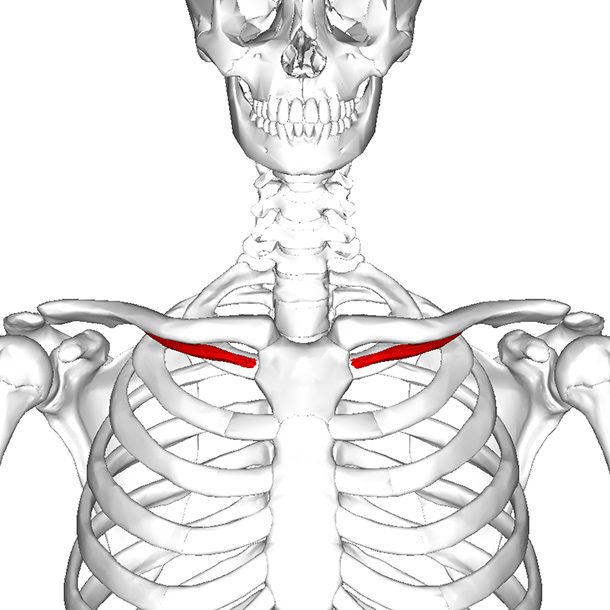 Source: http://discovermagazine.com/2004/jun/useless-body-parts
Source: http://discovermagazine.com/2004/jun/useless-body-parts The Subclavius Muscle stretches from the shoulder to the first rib. Not all humans have them. On the other hand, some have one or two. Either way, it would have been a much more useful muscle if we still walked on all fours.
Pyramidalis Muscle
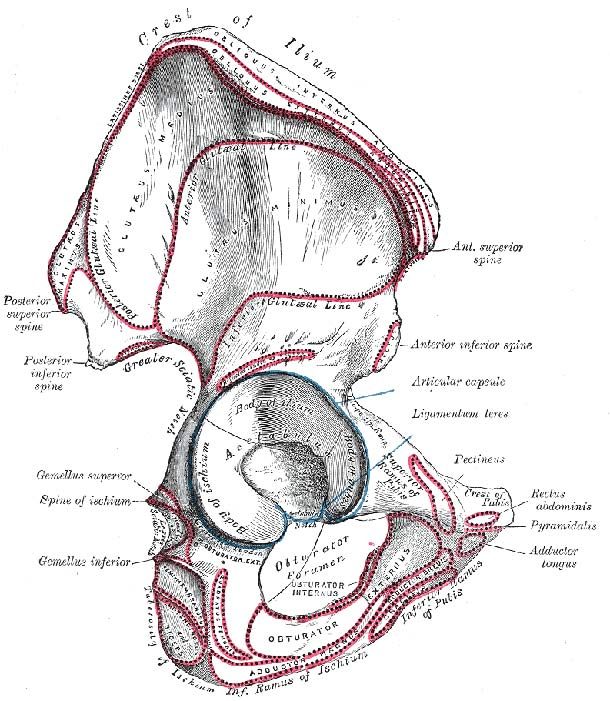 Source: https://www.britannica.com/list/7-vestigial-features-of-the-human-body
Source: https://www.britannica.com/list/7-vestigial-features-of-the-human-body A triangle-shaped muscle, the Pyramidalis Muscle is located between the muscle and muscle sheath of the rectus abdominis. Some people don’t have them, while others may have one or two, but they essentially play no important role to your abdominal section. Despite this, about 80 percent of the human population have at least one.
Vomeronasal Organ
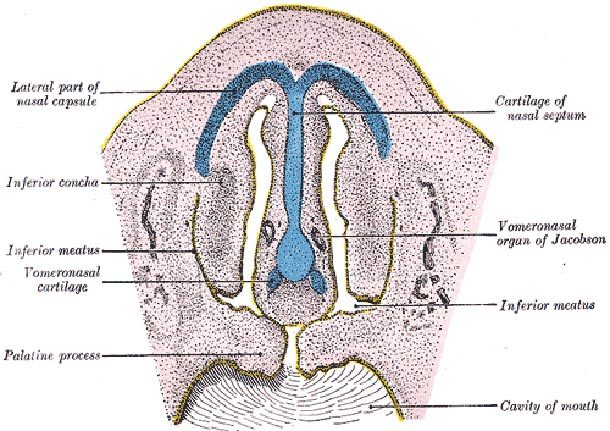 Source: https://www.sciencedirect.com/science/article/pii/S187972961100010X
Source: https://www.sciencedirect.com/science/article/pii/S187972961100010X For other animals, the Vomeronasal Organ is important for reproduction. It helps detect pheromones. In some adults, there is evidence that human’s had Vomeronasal cavities, but they are no longer operational, lacking the sensory fibers and neurons.



























